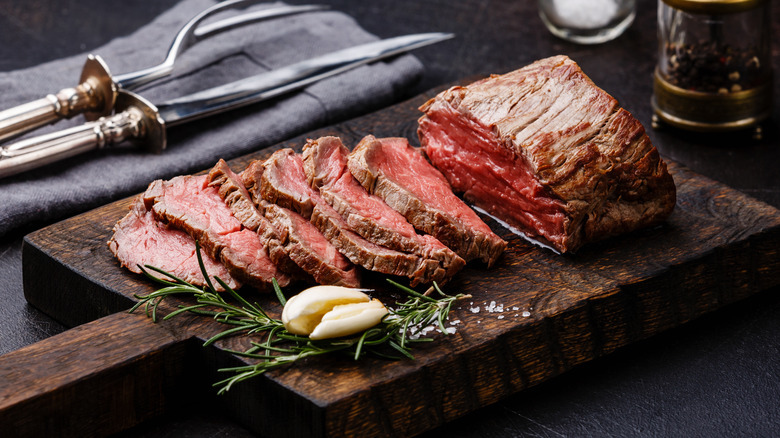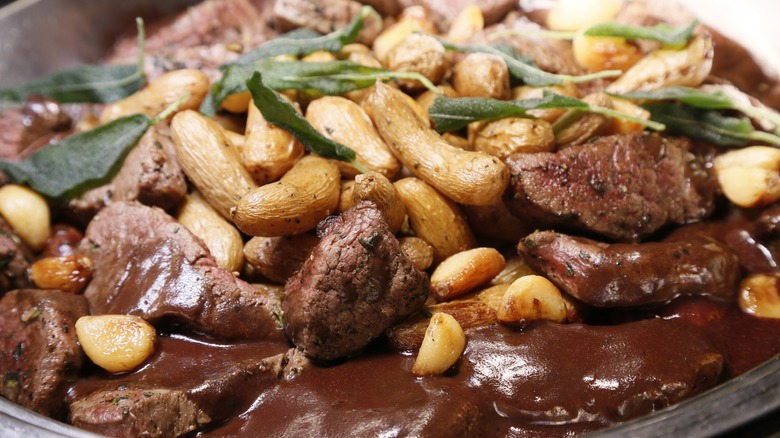Change Up Your Typical Steak Dinner With A French Chateaubriand
Steak dinners are a decadent way to celebrate special occasions, so why not go all out with the very best cut of meat? At Tasting Table we place Porterhouse, ribeye, and filet mignon in the top three most popular cuts of steak, but French chateaubriand might outrank them all.
Like filet mignon, the chateaubriand comes from the tenderloin, the prized portion of meat that surrounds the cow's spine. However, chateaubriand is the center cut of the tenderloin, which is both larger, more tender, and harder to find. It is also ultra-lean, lacking the thick muscle fibers that might hinder its delicate chew. As one of the finest cuts, its flavor speaks for itself, requiring little embellishment and a medium rare cook to showcase its rich taste and melt-in-your-mouth texture. Plus, the size will feed at least two people and up to eight.
Modern preparations involve simply seasoning the meat and searing it on all sides with either butter or olive oil, or a mixture of the two. After browning the steak, transfer the skillet to your oven to roast for around 12 minutes at 400 degrees Fahrenheit. To complement its umami-rich profile and lean constitution, chateaubriand is typically served with a butter and wine-based sauce with shallots, mushrooms, and tarragon. Béarnaise sauce is another popular accompaniment, or you could try our recipe which pairs it with a porcini-infused compound butter. Chateaubriand is also commonly served with chateau potatoes, which are small potatoes sauteed and roasted in plenty of butter.
Chateaubriand steaks are a staple fine dining
Chateaubriand's history is the root of its long-standing presence on fine dining restaurant menus. In keeping with its air of exclusive extravagance, chateaubriand was created by a 19th century French aristocrat's personal chef. Named in honor of the aristocrat, François-René de Chateaubriand, the steak was originally prepared by roasting it between two fatty, lower quality cuts of beef secured with cooking twine. This cooking method, known as barding, uses fattier proteins to insulate and enrich a leaner cut of steak. The fattier cuts burn to a crisp under the broiler or grill and are discarded. This rather wasteful method reflects the spare-no-expense luxuries enjoyed by the aristocracy.
During the mid-20th century, chateaubriand was often wrapped in bacon or beef fat and broiled or grilled. You'll see this type of cooking replicated with bacon-wrapped filet mignon. The dual sear and roast method came later and remains the most common cooking method used at steakhouses, fine dining restaurants, French homes, and beyond. You can still use twine to maintain the cut's log-like structure without adding extra fat; many butchers will do this for you upon request.

